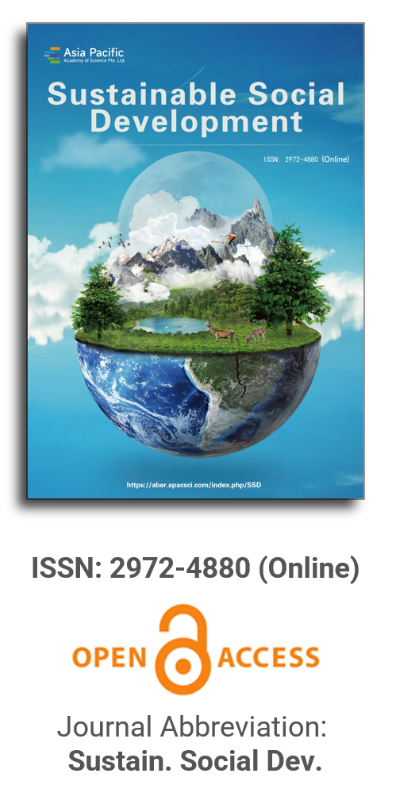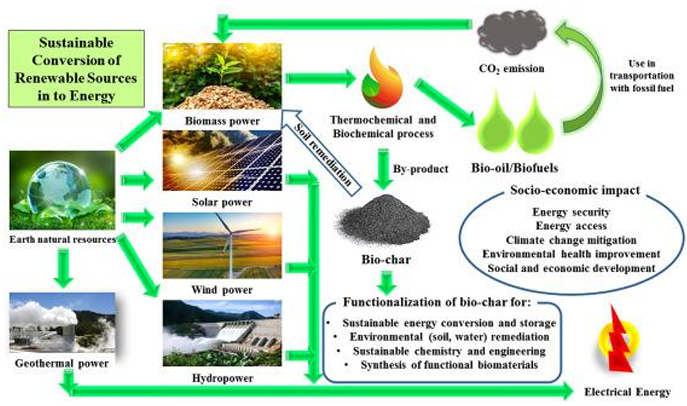
Asia Pacific Academy of Science Pte. Ltd. (APACSCI) specializes in international journal publishing. APACSCI adopts the open access publishing model and provides an important communication bridge for academic groups whose interest fields include engineering, technology, medicine, computer, mathematics, agriculture and forestry, and environment.

Will new tram lines enhance the connectivity and walkability? A case study of Sakarya
Vol 2, Issue 5, 2024
Download PDF
Abstract
This study investigates the impact of planned tram lines on walkability and accessibility in Sakarya, utilizing Geographic Information Systems (GIS) for spatial analysis. The research evaluates the catchment areas of proposed tram stops, assessing their suitability and coverage, and examines how these areas integrate with existing public transport routes. By calculating time-oriented catchments for 5, 8, and 10-minute walking distances, the study identifies service gaps and redundancies in the public transport network. The findings reveal that the new tram lines will enhance accessibility by extending coverage to high-density areas and potentially reducing the demand on existing bus services. The analysis also highlights the overlap between bus transit lines and tram stops, suggesting optimizations to improve network efficiency. The results offer valuable insights for urban planners, aiming to optimize Sakarya’s public transport system to be more inclusive and sustainable. This study contributes to urban mobility planning by providing a detailed understanding of how new tram lines can improve connectivity and support sustainable urban development.
References
- Chou JR. A Fuzzy-based Sustainability Assessment Approach for Promoting Sustainable Urban Mobility. In: Proceedings of the 2017 International Conference on Organizational Innovation (ICOI 2017). doi: 10.2991/icoi-17.2017.53
- Patrikiou E, Palantzas G, Nalmpantis D. Urban sustainable mobility indicators application in small cities: The case of Polykastro, Greece. Zervas E, ed. E3S Web of Conferences. 2023; 436: 11007. doi: 10.1051/e3sconf/202343611007
- Mohammed M, Senadheera S. Public Transport Affordability Evaluation for Addis Ababa City. Sustainability. 2022; 14(11): 6883. doi: 10.3390/su14116883
- Grindlay AL, Ochoa-Covarrubias G, Lizárraga C. Sustainable Mobility and Urban Space Quality: The Case of Granada, Spain. International Journal of Transport Development and Integration. 2021; 5(4): 309-326. doi: 10.2495/tdi-v5-n4-309-326
- Zhuk M, Pivtorak H, Gits I. Assessment of sustainability of the Lviv city transport system according to the indicator of accessibility. Transport technologies. 2021; 2021(2): 11-19. doi: 10.23939/tt2021.02.011
- Jawed A, Talpur MAH, Chandio IA, et al. Impacts of In-Accessible and Poor Public Transportation System on Urban Enviroment: Evidence from Hyderabad, Pakistan. Engineering, Technology & Applied Science Research. 2019; 9(2): 3896-3899. doi: 10.48084/etasr.2482
- A’rachman F, Setiawan C, Warnadi, et al. Spatial Analysis of Public Transportation Accessibility for Pedestrian in Central Jakarta. IOP Conference Series: Earth and Environmental Science. 2022; 1039(1): 012044. doi: 10.1088/1755-1315/1039/1/012044
- Vulevic A, Castanho RA, Naranjo Gómez JM, et al. Accessibility Dynamics and Regional Cross-Border Cooperation (CBC) Perspectives in the Portuguese—Spanish Borderland. Sustainability. 2020; 12(5): 1978. doi: 10.3390/su12051978
- Saif MA, Zefreh MM, Torok A. Public Transport Accessibility: A Literature Review. Periodica Polytechnica Transportation Engineering. 2018; 47(1): 36-43. doi: 10.3311/pptr.12072
- Doi K, Kii M, Nakanishi H. An Integrated Evaluation Method of Accessibility, Quality of Life, and Social Interaction. Environment and Planning B: Planning and Design. 2008; 35(6): 1098-1116. doi: 10.1068/b3315t
- Liu YR. Investigation and Evaluation of a Transport Index for a Healthy Ageing Society. Giforum. 2023; 1: 3-17. doi: 10.1553/giscience2022_02_s3
- Newman P, Kenworthy J. Sustainability and Cities: Overcoming Automobile Dependence. Available Online: https://trid.trb.org/View/503432 (accessed on 7 August 2024).
- Litman TA. Economic Value of Walkability. Transportation Research Record: Journal of the Transportation Research Board. 2003; 1828(1): 3-11. doi: 10.3141/1828-01
- Bok J, Kwon Y. Comparable Measures of Accessibility to Public Transport Using the General Transit Feed Specification. Sustainability. 2016; 8(3): 224. doi: 10.3390/su8030224
- Wachs M, Kumagai TG. Physical accessibility as a social indicator. Socio-Economic Planning Sciences. 1973; 5: 437-456. doi: 10.1016/0038-0121(73)90041-4
- Murray AT, Davis R, StimsonRJ, Ferreira L. Public Transportation Access. Transportation Research Part D: Transport and Environment. 1998; 3(5): 319-328. doi: 10.1016/S1361-9209(98)00010-8
- Chowdhury S, Zhai K, Khan A. The Effects of Access and Accessibility on Public Transport Users’ Attitudes. Journal of Public Transportation. 2016; 19(1): 97-113. doi: 10.5038/2375-0901.19.1.7
- Kaszczyszyn P, Sypion-Dutkowska N. Walking Access to Public Transportation Stops for City Residents. A Comparison of Methods. Sustainability. 2019; 11(14): 3758. doi: 10.3390/su11143758
- Vuchic VR. Transportation for Livable Cities, 1st ed. Routledge; 2017.
- Corazza MV, Favaretto N. A Methodology to Evaluate Accessibility to Bus Stops as a Contribution to Improve Sustainability in Urban Mobility. Sustainability. 2019; 11(3): 803. doi: 10.3390/su11030803
- Litman T. Evaluating Accessibility for Transport Planning: Measuring People’s Ability to Reach Desired Services and Activities. Available online: https://www.vtpi.org/access.pdf (accessed on 7 August 2024).
- Beimborn EA, Greenwald MJ, Jin X. Accessibility, Connectivity, and Captivity: Impacts on Transit Choice. Transportation Research Record: Journal of the Transportation Research Board. 2003; 1835(1): 1-9. doi: 10.3141/1835-01
- Hine J, Mitchell F. Better for Everyone? Travel Experiences and Transport Exclusion. Urban Studies. 2001; 38(2): 319-332. doi: 10.1080/00420980020018619
- Hochmair HH, Brossell E, Fu ZJ. Identification of Transit Service Gaps through Accessibility and Social Vulnerability Mapping in Miami-Dade County. GI-Forum. 2022; 1: 17-32. doi: 10.1553/giscience2022_01_s17
- Olsson LE, Maier R, Friman M. Why Do They Ride with Others? Meta-Analysis of Factors Influencing Travelers to Carpool. Sustainability. 2019; 11(8): 2414. doi: 10.3390/su11082414
- Zinia FA, Bhandari P, Tuffour JP, et al. Evaluating Social Equity of Transit Accessibility: A Case of Salt Lake County, U.S. Transportation Research Record: Journal of the Transportation Research Board. 2023; 2677(12): 806-814. doi: 10.1177/03611981231170005
- Piper R, Chan E, Glover R. Walking Distances to Bus Stops. Available online: https://ageconsearch.umn.edu/record/318542/files/agecon-trf-0675.pdf (accessed on 7 August 2024).
- Veillette MP, Deboosere R, Wasfi R, et al. Small Steps, Big Differences: Assessing the Validity of using Home and Work Locations to Estimate Walking Distances to Transit. Transportation Research Record: Journal of the Transportation Research Board. 2018; 2672(8): 840-848. doi: 10.1177/0361198118781150
- Eisenberg-Guyot J, Moudon AV, Hurvitz PM, et al. Beyond the bus stop: Where transit users walk. Journal of Transport & Health. 2019; 14: 100604. doi: 10.1016/j.jth.2019.100604
- Zhao F, Chow LF, Li MT, et al. Forecasting Transit Walk Accessibility: Regression Model Alternative to Buffer Method. Transportation Research Record: Journal of the Transportation Research Board. 2003; 1835(1): 34-41. doi: 10.3141/1835-05
- Loutzenheiser DR. Pedestrian Access to Transit: Model of Walk Trips and Their Design and Urban Form Determinants Around Bay Area Rapid Transit Stations. Transportation Research Record: Journal of the Transportation Research Board. 1997; 1604(1): 40-49. doi: 10.3141/1604-06
- Ayvalik CK, Khisty CJ. Heuristic Analysis of Impacts of Commuter Rail Station Consolidation on Pedestrian Access. Transportation Research Record: Journal of the Transportation Research Board. 2002; 1793(1): 47-54. doi: 10.3141/1793-07
- Arango Diaz JA. Analysis of pedestrian walking speed for traffic engineering design and operations. Available online: https://mspace.lib.umanitoba.ca/bitstream/1993/29709/1/Arango_Diaz_Analysis_of.pdf (accessed on 27 July 2024).
- Forde A, Daniel J. Pedestrian walking speed at un-signalized midblock crosswalk and its impact on urban street segment performance. Journal of Traffic and Transportation Engineering (English Edition). 2021; 8(1): 57-69. doi: 10.1016/j.jtte.2019.03.007
- Liang S, Leng H, Yuan Q, et al. How does weather and climate affect pedestrian walking speed during cool and cold seasons in severely cold areas? Building and Environment. 2020; 175: 106811. doi: 10.1016/j.buildenv.2020.106811
- Fan X, Liu C, Li Y, et al. Study on the layout of light rapid transit station connecting bus line based on GIS network analysis—Taking Glasgow City as an example. Journal of Physics: Conference Series. 2024; 2786(1): 012011. doi: 10.1088/1742-6596/2786/1/012011
- Pineda-Jaramillo J, Bigi F, Bosi T, et al. Short-Term Arrival Delay Time Prediction in Freight Rail Operations Using Data-Driven Models. IEEE Access. 2023; 11: 46966-46978. doi: 10.1109/access.2023.3275022
- Lee J, Boarnet M, Houston D, et al. Changes in Service and Associated Ridership Impacts near a New Light Rail Transit Line. Sustainability. 2017; 9(10): 1827. doi: 10.3390/su9101827
- Smith LB, Yang Z, Golberstein E, et al. The effect of a public transportation expansion on no‐show appointments. Health Services Research. 2021; 57(3): 472-481. doi: 10.1111/1475-6773.13899
- Ali L, Nawaz A, Iqbal S, et al. Dynamics of Transit Oriented Development, Role of Greenhouse Gases and Urban Environment: A Study for Management and Policy. Sustainability. 2021; 13(5): 2536. doi: 10.3390/su13052536
- Vuchic VE. Urban Transit: Operations, Planning, and Economics, 1st ed. Wiley and Sons; 2017.
- Ferbrache F, Knowles RD. City boosterism and place-making with light rail transit: A critical review of light rail impacts on city image and quality. Geoforum. 2017; 80: 103-113. doi: 10.1016/j.geoforum.2017.01.013
- Currie G. Lies, Damned Lies, AVs, Shared Mobility, and Urban Transit Futures. Journal of Public Transportation. 2018; 21(1): 19-30. doi: 10.5038/2375-0901.21.1.3
- Currie G, Ahern A, Delbosc A. Exploring the drivers of light rail ridership: an empirical route level analysis of selected Australian, North American and European systems. Transportation. 2010; 38(3): 545-560. doi: 10.1007/s11116-010-9314-9
- Gutiérrez J, Cardozo OD, García-Palomares JC. Transit ridership forecasting at station level: an approach based on distance-decay weighted regression. Journal of Transport Geography. 2011; 19(6): 1081-1092. doi: 10.1016/j.jtrangeo.2011.05.004
- Badland H, White M, MacAulay G, et al. Using simple agent-based modeling to inform and enhance neighborhood walkability. International Journal of Health Geographics. 2013; 12(1): 58. doi: 10.1186/1476-072x-12-58
- Lin TG, Palmer R, Xia JC, et al. Automatic generation of station catchment areas: A comparison of Euclidean distance transform algorithm and location-allocation methods. In: Proceedings of 2014 11th International Conference on Fuzzy Systems and Knowledge Discovery (FSKD); 19-21 August 2014; Xiamen, China.
- Gutiérrez J, García-Palomares JC. Distance-Measure Impacts on the Calculation of Transport Service Areas Using GIS. Environment and Planning B: Planning and Design. 2008; 35(3): 480-503. doi: 10.1068/b33043
- Nur Sunoto Y, Ponrahono Z, Ash’aari ZH, et al. The Influence of Land Use Activities Towards Mass Rapid Transit (Mrt) Feeder Bus Service Ridership. Planning Malaysia. 2021; 19. doi: 10.21837/pm.v19i18.1052
- Zhu Z, He Y, Guo X, et al. Improved Huff Model for Estimating Urban Rail Transit Station Catchment Areas considering Station Choices. Journal of Advanced Transportation. 2021; 2021: 1-11. doi: 10.1155/2021/6374724
- Brifingi I. T.C. Sakarya Valiligi. Available online: http://www.sakarya.gov.tr/kurumlar/sakarya.gov.tr/y_site/sakarya/brifing/Brifing_150224.pdf (accessed on 7 August 2024).
- Aslan H, Kocaman H. GIS Based Bus Stop Optimization for Sakarya Public Transportation System. Sakarya University Journal of Science. 2018; 22(5): 1298-1308. doi: 10.16984/saufenbilder.394911
- Address Based Population Registration System Results 2023 (Turkish). Available online: https://data.tuik.gov.tr/Bulten/Index?p=Adrese-Dayali-Nufus-Kayit-Sistemi-Sonuclari-2023-49684 (accessed on 28 July 2024).
- Vuchic VR. Urban transit: operations, planning and economics. Hoboken, N.J: J. Wiley & Sons; 2005.
- Cervero R, Duncan M. Transit’s Value-Added Effects: Light and Commuter Rail Services and Commercial Land Values. Transportation Research Record: Journal of the Transportation Research Board. 2002; 1805(1): 8-15. doi: 10.3141/1805-02
- Banister D. The sustainable mobility paradigm. Transport Policy. 2008; 15(2): 73-80. doi: 10.1016/j.tranpol.2007.10.005
- Loo BPY, Chen C, Chan ETH. Rail-based transit-oriented development: Lessons from New York City and Hong Kong. Landscape and Urban Planning. 2010; 97(3): 202-212. doi: 10.1016/j.landurbplan.2010.06.002
- Ortúzar JdD, Willumsen LG. Modelling Transport. Chichester: Wiley; 2011.
Supporting Agencies
Copyright (c) 2024 Yavuz Halimergün, Abdulkadir Özden, Süleyman Nurullah Adahi Şahin, Hakan Kocaman
License URL: https://creativecommons.org/licenses/by/4.0/

This site is licensed under a Creative Commons Attribution 4.0 International License (CC BY 4.0).

Prof. Kittisak Jermsittiparsert
University of City Island, Cyprus





It is with deep regret that we announce the cancellation of the Forum on Sustainable Social Development & Computing and Artificial Intelligence, originally scheduled for June 15, 2025.

